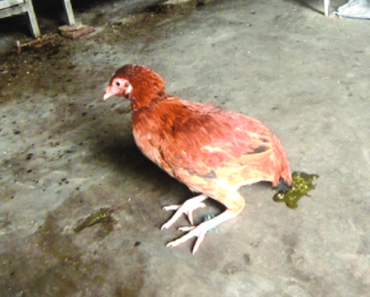Contents

Welcome to my Chicken blog! we will explore the fascinating world of chicken growth. Have you ever wondered how fast do chickens grow? Join me as we dive into the stages of a chicken’s growth and learn about the factors that influence their development. Get ready for an exciting journey through the rapid growth process of these remarkable creatures!
How Fast Do Chickens Grow: A Guide to Understanding Chicken Growth Rates
How Fast Do Chickens Grow: A Guide to Understanding Chicken Growth Rates
Understanding the growth rates of chickens is essential for backyard chicken enthusiasts and farmers alike. Whether you are raising chickens for meat or eggs, knowing how fast they grow can help you make informed decisions about their care and management.
Factors Affecting Chicken Growth Rates:
Several factors contribute to how fast chickens grow. Genetics, nutrition, environment, and breed characteristics all play a significant role in determining the growth rate of chickens.
Genetics:
Genetics is the foundation of chicken growth rates. Different breeds have been selectively bred over generations to prioritize specific traits, including growth rate. For example, broiler chickens, such as the Cornish Cross, have been developed to gain weight quickly.
Nutrition:
Proper nutrition is vital for optimal growth in chickens. A balanced diet that includes a mix of carbohydrates, proteins, fats, vitamins, and minerals is necessary. Commercially available feeds specifically designed for different stages of chicken growth can help ensure they receive the right nutrients at each phase.
Environment:
The environment in which chickens are raised can impact their growth rates. Factors such as temperature, humidity, ventilation, and space availability can influence their overall health and development. Providing a clean and suitable living environment is crucial for promoting healthy growth.
Breed Characteristics:
Different chicken breeds have varying growth rates. Some breeds are known for their fast growth, while others take longer to mature. It’s important to research and select breeds based on your specific goals, whether it’s meat production or egg-laying capacity.
Average Chicken Growth Rates:
On average, chickens reach their full size and weight within 4 to 6 months. However, it’s important to note that growth rates vary depending on the breed and purpose. For example, broiler chickens can reach market weight as early as 6 to 8 weeks.
Conclusion:
Understanding how fast chickens grow is crucial for successful chicken rearing. Factors such as genetics, nutrition, environment, and breed characteristics all contribute to their growth rates. By providing the appropriate care and attention to these factors, you can ensure healthy and optimal growth in your chickens.
Factors affecting the growth rate of chickens
The growth rate of chickens can be influenced by various factors, including genetics, nutrition, environmental conditions, and management practices. Genetics plays a significant role in determining how fast chickens grow. Different breeds have been selectively bred for specific traits, such as meat production or egg-laying ability, which can affect their growth rate. Additionally, nutrition plays a crucial role in chicken growth. Providing a balanced diet that meets their nutritional requirements, including protein, vitamins, and minerals, is essential for optimal growth. Environmental conditions such as temperature, humidity, and lighting also impact the growth rate of chickens. Keeping the environment comfortable and suitable for their needs can promote faster growth. Lastly, management practices related to housing, biosecurity, and disease prevention are important for maximizing growth potential.
Average growth rate of chickens
The average growth rate of chickens can vary depending on several factors, but in general, broiler chickens, which are raised for meat production, tend to grow faster than laying hens. Broilers typically reach their market weight within 5 to 7 weeks, with an average daily weight gain of around 50-60 grams. In contrast, laying hens take longer to reach their mature size, usually between 16 to 20 weeks. During this period, they experience steady growth and start laying eggs. The growth rate may also differ among different breeds, with some breeds growing faster than others.
Strategies to maximize growth rate in chickens
To maximize the growth rate of chickens, it is essential to implement certain strategies. Providing a well-balanced diet that meets their nutritional requirements is crucial. This includes offering a feed formulated specifically for their age and purpose, with the right balance of protein, energy, vitamins, and minerals. Optimizing the living environment is also important. This involves ensuring adequate space, proper ventilation, clean water, and comfortable temperatures. Good management practices such as regular health checks, disease prevention, and proper biosecurity measures are essential for minimizing stress and maximizing growth potential. Additionally, selecting fast-growing breeds or hybrids can help achieve faster growth rates in chickens.
FAQ
How quickly do chickens grow from hatching to market weight?
Chickens typically reach market weight between 5 to 7 weeks of age. Broiler chickens, which are raised specifically for meat production, are bred to grow at a rapid pace. They are usually ready for processing and sale when they reach an average weight of 4 to 7 pounds (1.8 to 3.2 kilograms). The rapid growth rate of broiler chickens is achieved through selective breeding and optimal nutrition. It’s important to note that the growth rate may vary depending on genetics, breed, and specific management practices.
What factors can affect the growth rate of chickens?
There are several factors that can affect the growth rate of chickens:
1. Genetics: The genetic makeup of a chicken plays a significant role in determining its growth rate. Breeds that have been selectively bred for faster growth tend to grow more quickly than others.
2. Nutrition: Proper nutrition is crucial for optimal growth. Chickens require a balanced diet with the right combination of protein, carbohydrates, fats, vitamins, and minerals. Feed quality and formulation are important factors in ensuring chickens receive the necessary nutrients for growth.
3. Housing conditions: The environment in which chickens are raised can impact their growth rate. Factors such as temperature, humidity, ventilation, and lighting all play a role. It’s important to provide a comfortable and stress-free environment to promote healthy growth.
4. Disease and health status: Chickens that are affected by diseases or health issues may experience stunted growth. Regular health checks and appropriate vaccination programs can help prevent diseases and optimize growth.
5. Management practices: Proper management practices, including regular cleaning, adequate space, and access to clean water, can enhance growth. Good flock management ensures that chickens are not subjected to unnecessary stressors that could hinder their growth.
6. Hormonal factors: Hormonal factors, such as the presence of growth-promoting hormones, can influence the growth rate of chickens. However, the use of growth hormones in poultry production is strictly regulated in many countries.
genetics, nutrition, housing conditions, disease control, management practices, and hormonal factors can all have an impact on the growth rate of chickens.
Are there any specific breeds of chickens that grow faster than others?
Yes, there are specific chicken breeds that are known for their fast growth rate. One such breed is the Cornish Cross, which is a popular meat chicken breed. These chickens have been selectively bred to have a high feed conversion rate and grow at an accelerated pace. They reach market weight in around 6-8 weeks, making them one of the fastest-growing chicken breeds.
Another breed known for its fast growth is the White Plymouth Rock. These chickens have good growth rates and are often raised for meat production. They usually reach market weight in around 10-12 weeks.
It’s important to note that while these breeds are known for their fast growth, they may require careful management and monitoring of their health and diet to ensure optimal growth and well-being.
Understanding how fast chickens grow is crucial for chicken farmers and enthusiasts alike. Chickens are remarkably efficient at converting feed into body weight, with broiler chickens reaching market weight in just a matter of weeks. However, it is important to consider the potential health implications of rapid growth and ensure appropriate management practices are in place to promote the well-being of the birds. Whether you’re raising chickens for meat or eggs, being aware of their growth rate allows for better planning and decision-making in terms of feeding, housing, and overall flock management. By providing optimal conditions and nutrition, we can ensure that our feathered friends thrive and reach their full potential. So, how fast do chickens grow? The answer lies in efficient management and care. Let’s continue to learn, adapt, and improve as we embark on this fascinating journey of raising chickens.






